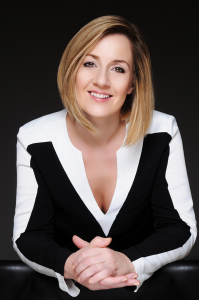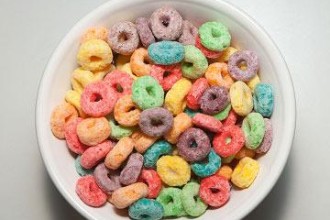Before I retrained as a nutritional therapist I could never lose weight and suffered bouts of fatigue, cravings for sugary foods, dark circles under the eyes and bad skin. As I learned about nutrition I assumed I was gluten intolerant and cut out bread, but the symptoms never really went away. I eventually had an intolerance test and found I was intolerant to yeast; so whilst cutting out bread had helped, I was still eating a lot of yeasty foods.
Yeast overgrowth has a wide range of symptoms including flatulence, bad breath, fatigue, irritability, cravings for sugary foods, stomach cramps, bad skin and indigestion, thrush and inflammation. It can also decrease thyroid function, which makes it difficult to lose weight. If you suspect you have a yeast overgrowth or are intolerant to yeast try http://www.yeastconnection.com/yeast.html#questionaire and follow a yeast free diet for 6-8 weeks. If there is a significant improvement in these symptoms, you have found your culprit.
Foods to avoid as they always contain yeast:
- Avoid baked goods such as breads and biscuits, cakes and doughnuts, basically anything containing white flour and sugar. For special occasions, yeast free varieties are available http://www.goodnessdirect.co.uk/cgi-local/frameset/script/search.html?query=yeast+free+cakes&snar=
- Confectionery or sugary foods of any kind including chocolate – depending on how it is processed, chocolate may have traces of yeast in it, which may or may not be a problem, depending on how sensitive you are. It’s the sugar in chocolate that you should be avoiding if you are on a yeast-free diet as it feeds the yeast. Some chocolate bars may include maltose, which is made from fermented barley so contains yeast.
- Alcohol, includes beer, wine, cider and sake
- Hard cheeses, especially Blue varieties
- Fruit juice and sugared soft drinks
- Fruit and fruit skins, especially: grapes, plums, grape juice
- Malt beverages such as Ovaltine
- Soup – prepared or canned
- Mushrooms
- Vinegar, includes pickles
- Peanuts and pistachios (can be contaminated with traces of mould)
- Yeast Extracts including Bovril, Marmite, Oxo and Vegemite (Kallo has a range of yeast free stock cubes)
- MSG (often extracted from yeast extract or from wheat – usually in Chinese and packaged foods)
- Soy sauce (Most brands do, some do not)
- Some brands of vitamin B are derived from yeast – a nutritional therapist can recommend the best brand and dose for you.
- If you’re on the contraceptive pill, try to find another method, birth control pills can lead to yeast infections because they increase oestrogen levels and increased oestrogen levels can increase susceptibility to yeast.
Yeast-free foods to focus on:
- It’s easier if you focus on a paleo diet, this includes meat, fish, vegetables and small amounts of certain fruits
- Eggs, chicken, red meat, fish, prawns and soya substitutes: focus on protein rather than a carbohydrates (Candida feeds off the sugars in carbohydrates) at every meal – the bonus is protein fills you up.
- Substitute rice, pasta and potatoes with vegetables (fresh or frozen)
- Rye bread, Ryvita, rice cakes, Irish soda bread are all yeast free. Try to avoid bread, if you must have it, choose a yeast free variety http://www.goodnessdirect.co.uk/cgi-local/frameset/script/search.html?query=yeast+free+cakes&snar=
- Milk, natural yogurt, low fat cottage cheese with no sugar, rice milk
- Brown rice (no white rice), oats and corn meal
- Hummus
- Include garlic and onions and other strong herbs as they kill off Candida – add them to homemade soups and stews.
- Walnuts, cashews, hazelnuts, macadamias, coconut
- Homemade popcorn, plain crisps with no MSG
- Fruit not bruised (but no melons or grapes)
- Herbal teas, mineral water
- Take probiotics daily to boost the healthy bacteria in your gut. Look for brands that contain 10 billion bifidobacteria species and lactobacillus species
- Aim to follow the diet for 4-8 weeks. If followed strictly; that’s long enough to identify whether you have a yeast intolerance and to kill the yeast overgrowth, but not so long that you develop any nutritional deficiencies
Yeast-Free Meal Plan
Breakfast: Eggs and tomatoes are good, as are warm cereals including oatmeal and hot brown rice cereal or try rice cakes or Ryvita with salmon etc. If you like fruit, green apples and pineapple are ok . Surprisingly, coffee and black tea contain traces of yeast so to go totally yeast-free, opt for green tea and don’t add sweeteners, that includes artificial sweeteners, maple syrup or honey.
Lunch: You’ll need to avoid dairy items while you’re following a yeast-free diet, so any lunch foods made with cheese are off limits. Instead, stick to fresh salads, vegetable soups and plates of steamed veggies. Be sure that your salad or vegetable plate is dressed with just olive oil and lemon or lime juice with a pinch of herbs and salt. Stay away from vinegar, which is fermented and contains yeast, and any dressings made with dairy or sweeteners.
Snacks: Choosing yeast-free snacks can be difficult when packaged snack foods are so quick and convenient. But processed foods often contain hidden yeasts and sugars. When you need an afternoon snack, pick up fresh veggies to dip in hummus or another variety of bean dip. Most seeds and nuts are OK, just avoid peanuts and pistachios. Rice cakes and crackers made from rice are good yeast-free snacks as well. Avoid fresh or dried fruits, which are full of sugar.
Dinner: Choose fresh or steamed vegetables with lean protein for a great yeast-free dinner. Bake or boil a piece of fish or lean poultry. If you’re a vegetarian, beans make a good protein option for a yeast-free meal. Combine protein and vegetables with a whole-grain side dish such as brown rice or couscous. Avoid all alcoholic beverages and sodas. Instead drink still or sparkling water with a squeeze of lemon or lime juice with your meals.
Bearing with the diet is worth it as symptoms like tiredness and bloating should soon start to lift. The aim, after two to three months, is to start slowly reintroducing foods – though you will probably always have to be careful with yeasty sugary foods. For further advice book an appointment with a nutritional therapist. Contact the British Association of Nutritional Therapists on http://bant.org.uk/about-nutritional-therapy/choosing-a-practitioner

Shani Shaker BA (hons), dipION, mBANT, CNHC, is a registered nutritional therapist with a focus on regenerative and functional nutrition, disordered eating, addiction and mental health. Based in London her services include one-to-one coaching, group classes and Skype sessions. Contact her at [email protected]
Disclaimer: The information provided is intended for your general knowledge only and is not a substitute for professional medical advice or treatment for specific medical conditions. Please consult your healthcare provider with any questions or concerns you may have regarding your condition. Supplementation should only be temporary. If you’re eating a nutrient-rich diet, extra supplementation should only last for a month or two, just long enough to resolve the deficiency.




